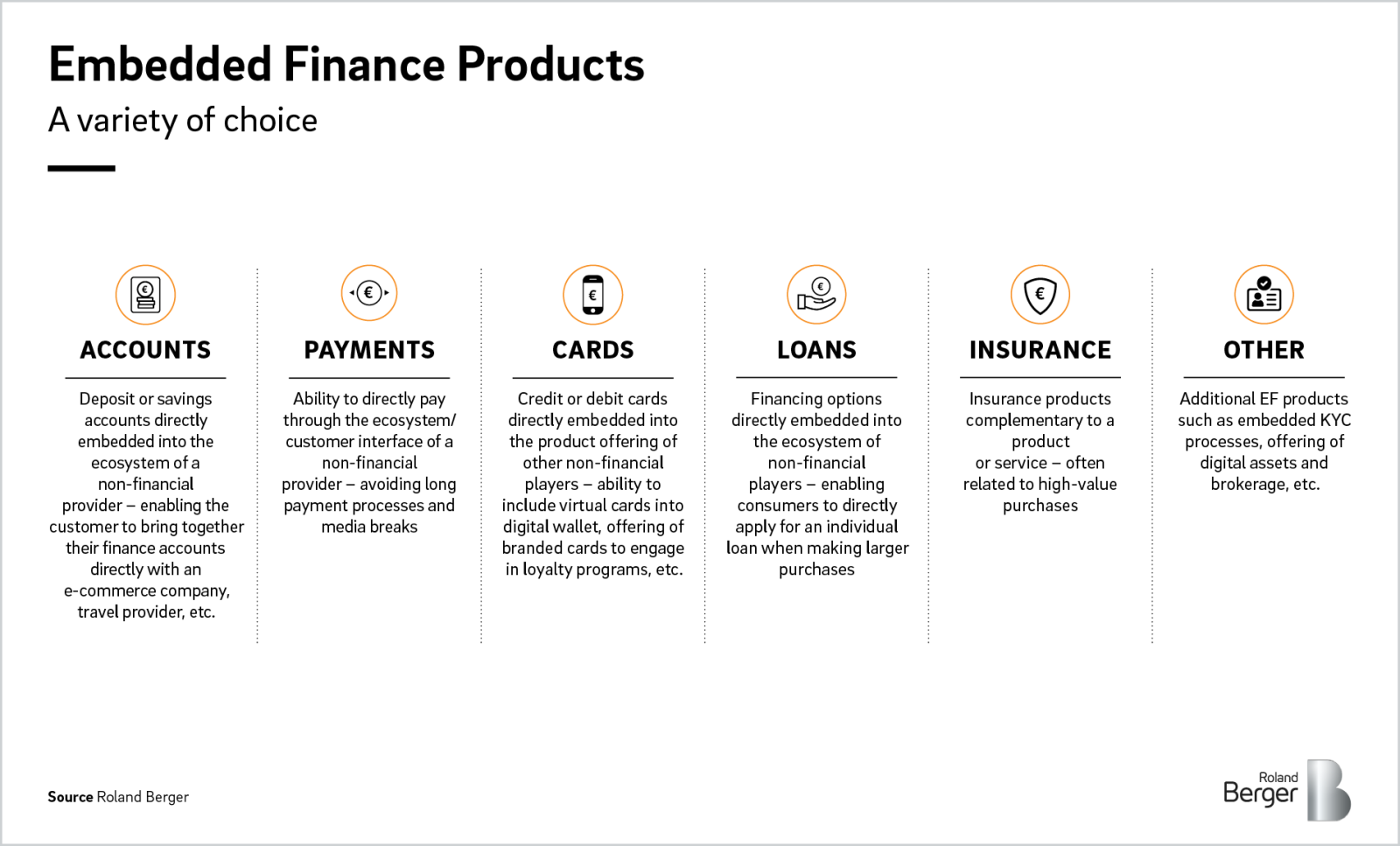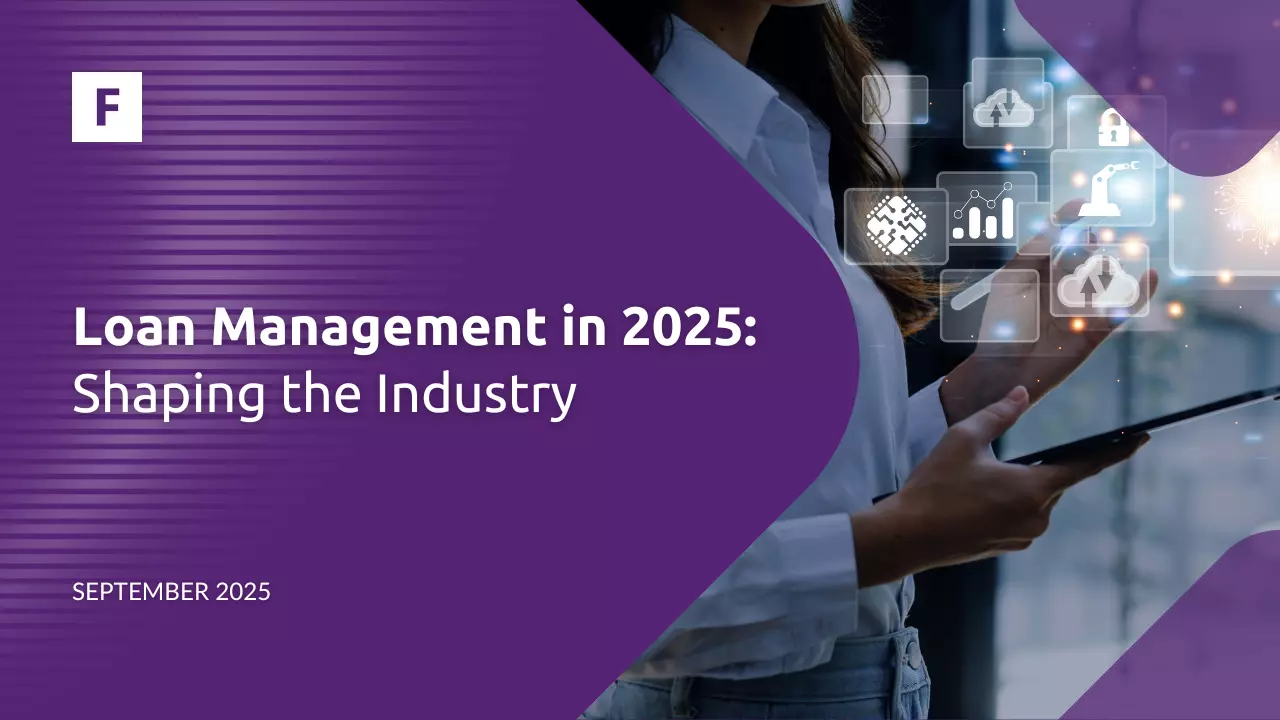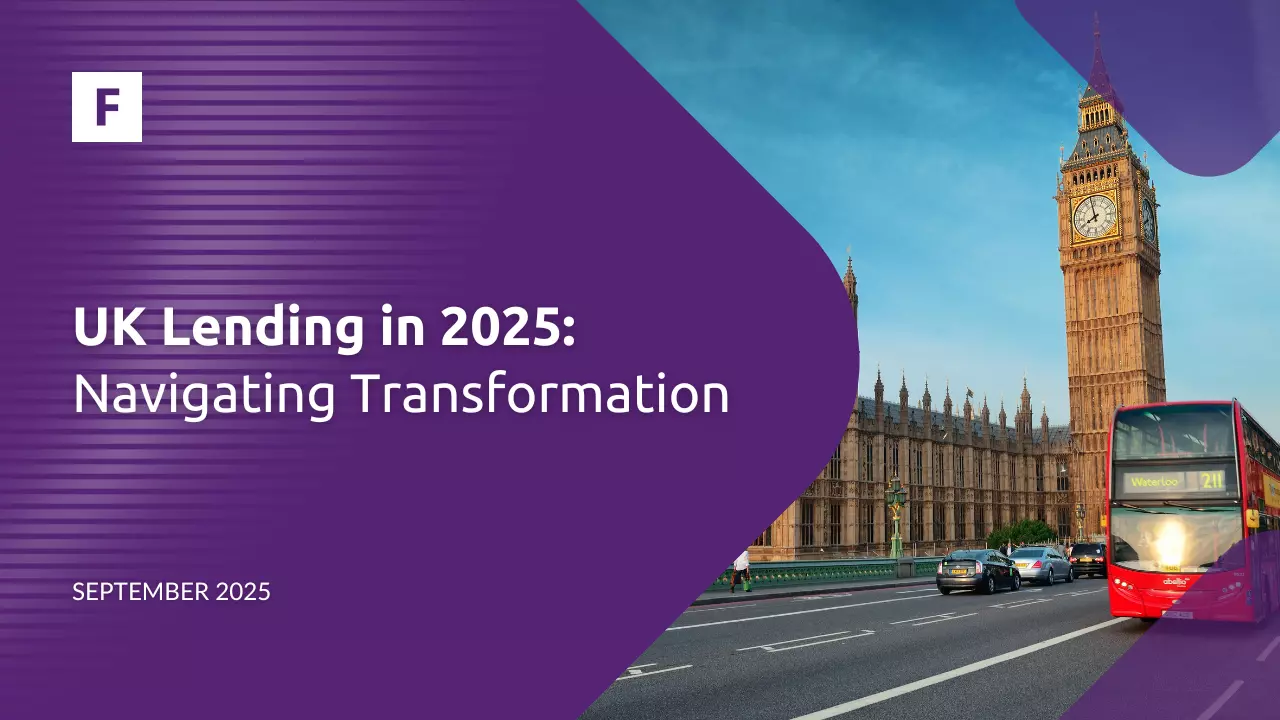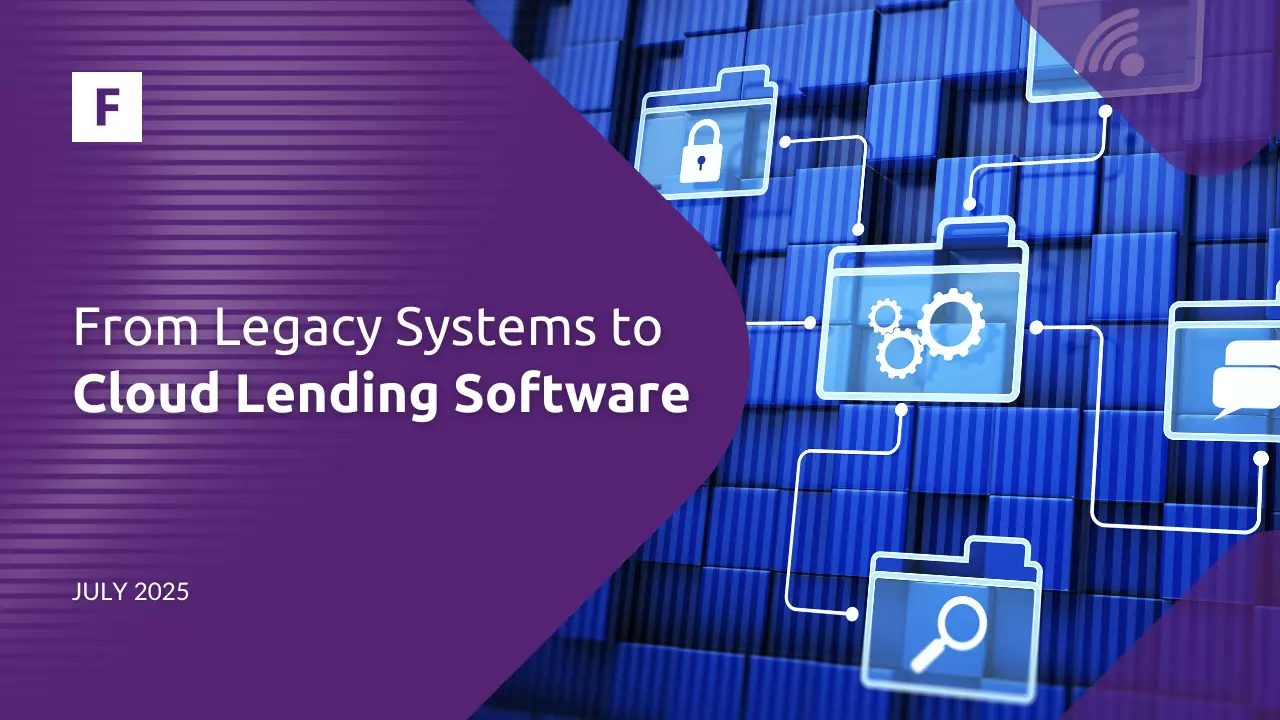To be successful in today's ever-changing financial world, it is crucial to implement new technologies and keep up with the latest trends. One key area to focus on is burgeoning opportunities within embedded finance.
These are the main key takeaways from this article:
Embracing embedded finance.
Managing potential and risks.
Strategic planning.
Future growth opportunities.
What is embedded finance? Embedded finance (EF) means incorporating banking and other financial services into nonfinancial apps and services. Through APIs connected to financial partners, companies integrate banking, lending, insurance, and investment services with their offerings. Although not entirely new, as seen with buy now, pay later (BNPL) services, the widespread use of APIs and smartphones allows consumers to access banking services conveniently, enhancing customer loyalty and generating additional revenue streams for companies.
Embedded finance integrates checking and savings accounts, loans, insurance, debit cards, and investment tools into platforms of nonfinancial companies through partnerships with tech partners and traditional financial institutions. While integrating financial products into nonfinancial transactions isn't new, as seen with auto loans and store-branded credit cards, embedded finance has become prominent since the mid-2010s. This growth is driven by fintech and retailing app innovations, evolving customer expectations, the unbundling of traditional banking, the rise of SaaS models, and the pursuit of new market opportunities.
Forbes' former council member Dmitry Dolgorukov mentioned in the article about Embedded Finance: What It Is And How To Get It Right that embedded finance isn't all about convenience. It's also a tool for better-understanding consumers and their spending habits and needs. This data can later be used to drive future business development.
Dolgorukov has marked five primary uses of embedded finance. The first one is the aforementioned buy now, pay later system, which is creating a new line of credit for modern shoppers. The second one is Point-of-service lending. Evolving from BNPL, integrated lending takes loans one step further. Businesses seeking to finance larger or more significant purchases can embed these financial tools. As a result, they often require further information, such as data on creditworthiness, to allow them to lend responsibly.
The third one is integrated insurance services. When purchasing a new product or service, customers want to ensure that, should the worst happen, their money will not be wasted. And that's where integrated insurance comes in. By embedding insurance financing tools, businesses are better placed to deliver insurance quickly.
Fourth is investments and trading. EF tools in investment applications allow users to connect with their brick-and-mortar bank to invest in meeting their current financial situation and spending habits. This is an example of embedded finance used by a financial services provider of another type.
The last one is fintech-as-a-service. From invoicing to customer acquisition and everything in between, financial technology-as-a-service tools are increasingly being added to company offerings.

Embedded Banking
Embedded banking integrates banking services into non-banking digital platforms, allowing users to access financial products without interacting directly with traditional banks. This approach aims to create a seamless and user-friendly financial experience, eliminating the need to switch between multiple apps or websites. Chime exemplifies this by offering features like no-fee checking and savings accounts, early direct deposit, and a user-friendly interface within its app, enabling users to manage their banking needs conveniently on a single platform.
Joris Hensen, founder and co-lead, and Brigitte Kötting, communications manager at Deutsche Bank's API program, have published academic papers while helping to lead EF's use at one of Europe's largest banks. "Embedded finance has great potential to empower 'unbanked' target groups. Whether it's offering banking services through mobile wallets or providing microfinance options, e.g., within agricultural supply chains---embedded finance can help foster economic growth," wrote the two about the future of EF.
Embedded Lending
Embedded lending leverages data and customer engagement from host platforms, using APIs for quick data exchange and service delivery. This integrated approach has become popular in e-commerce, ride-sharing, and SaaS, aiming to provide immediate, contextual financing without redirecting customers. By embedding lending features directly into non-financial platforms, APIs enable instant credit assessments based on data from multiple sources. Upon approval, funds are transferred to the customer or used within the platform. Convenient repayment methods, such as direct debits, ensure financial solutions are available exactly when needed. The global embedded finance market is projected to reach $385 billion by 2029, growing at an annual rate of 30%.
As embedded lending advances, Fintech Market provides tools to streamline and optimize the process with digital lending software. Our decision engine facilitates decision-making model creation by integrating input information and equations with customizable data fields and smooth system integration. Our credit decision software includes advanced risk evaluation and application scoring features that optimize decision-making. The engine allows for creating decision models using input data and equations, with customizable data fields and integration capabilities for existing systems. It offers flexibility in configuring data fields, smooth integration with core systems, and streamlined decision scenarios supported by various equations, interactive guides, and testing features.
We advise you to use our loan management system to perfect digital lending. Our loan management software streamlines the process of offering different types of loans, making it more efficient for customers seeking credit. Financial institutions and private lenders can deliver reliable services more easily than traditional banks. Our comprehensive platform supports the entire loan lifecycle, from application processing and loan origination to servicing, payment collection, and reporting.
Our consumer lending system equips businesses to design bespoke financial products for underserved customers, enhancing financial inclusion and addressing high-risk profiles. By streamlining the loan origination process, the platform allows institutions to offer customized solutions for specific groups, such as women entrepreneurs or rural communities. Its key features include the flexibility to create tailored products for diverse financial needs, including unsecured and secured loans, making it easier to manage and cater to various financial requirements.
Different Sectors Leveraging EF
As the market evolves, the use of embedded finance is likely to expand and diversify. Recently, embedded finance has been seen in several areas. In retail e-commerce platforms, online marketplaces where customers can obtain instant loans during online checkout to finance purchases. Even healthcare portals instantly allow patients to finance treatments or procedures, reducing upfront costs. Educational platforms offer student loans directly during course registration, facilitating easier enrollment.
EF provides companies across various sectors a competitive advantage by enhancing user experience, increasing basket size, retaining clients, and generating new revenue streams. By offering financial products exactly when and where customers need them, embedded finance creates a seamless customer journey, influencing browsing and conversions. This integration adds value for consumers, encouraging repeat business and strengthening customer loyalty, thereby deepening their relationship with the brand.
Successful embedded finance requires three key elements: it should complement the business's existing offerings, serving as a natural extension to core products and services; it should make sense to the customer, addressing a need or solving a common problem; and financial products should be intelligently offered at the point of need, seamlessly integrated into the customer journey. Recent success stories highlight the advantages of adequately implemented embedded finance.
Success stories such as those of Starbucks and Uber are the ones to follow. The Starbucks rewards platform exemplifies adequate embedded finance. The app allows customers to load funds, pre-order, pay for purchases, and earn loyalty rewards, contributing significantly to the company's success. With 28.7 million users in the US, the platform drove 55% of Starbucks' US operating revenue in Q4 2022.
Uber effectively utilizes embedded finance by offering drivers access to multiple ride-hailing options like Bolt, Gett, and Lyft to increase fare opportunities. The company also provides customized financial solutions, such as Uber cards and a digital wallet, enabling real-time access to earnings through the Uber Debit account. Uber's instant pay feature also replaces the traditional weekly payment system, giving drivers immediate access to their earnings after each trip. These EF solutions enhance the driver experience, offering financial convenience and flexibility, which helps Uber retain more staff.

Potential Risks
While the integration of embedded finance offers numerous benefits, it is crucial to recognize and manage the associated challenges and risks. This complex ecosystem---fintechs, infrastructure providers, platform providers, and banks---requires advanced tech capabilities and a strategy to handle interoperability risks and regulatory scrutiny. Financial institutions must update technology and adopt open architectures to improve digital lending capabilities and risk management. Product-led fintechs also need to integrate comprehensive risk practices. Those that excel in these areas will gain a competitive edge. A strong interoperability strategy can lower costs and unlock new revenue opportunities.
Interoperability is the foundation of embedded finance, requiring an open cloud architecture and APIs to enable communication among banks, infrastructure providers, and fintechs. However, this interconnected ecosystem amplifies security, privacy, and regulatory risks as multiple players interact with the same data. Traditionally managed by banks, these risks are now complicated by the proliferation of third-party vendors and emerging technologies like Web 3.0, DeFi, and cryptocurrency.
How to Manage These Risks?
Banks and financial institutions must proactively manage embedded finance risks in the rapidly evolving financial services landscape through a systematic three-step approach. Risk teams should collaborate closely with business units to identify critical risk areas. Establishing an operational model ensures alignment across all stakeholders, including third-party entities, to address these risks comprehensively.
Leverage new capabilities by embracing automation and explainable AI technologies to enhance compliance and risk management. Empowering professionals across all lines of business with these capabilities strengthens the institution's ability to navigate regulatory complexities effectively.
Foster a culture where risk data is seamlessly shared across all lines of defense. This integration promotes a strategic view of compliance as a competitive advantage rather than a mere compliance exercise.
Embedded finance offers financial institutions significant opportunities but also introduces new vulnerabilities. By implementing a risk management strategy and investing in appropriate technologies, institutions can capitalize on the benefits of embedded finance while safeguarding against emerging threats.
The Future of Embedded Finance
Predictions for the future forecast exponential growth for the embedded finance market, as 74% of European businesses plan to launch integrated financial solutions. 64% are looking to deliver these offerings by the year 2025. Many companies embrace embedded finance to meet consumer demand for convenience and accessibility while seeking ways to capitalize on new opportunities during economic uncertainty.
Demand for embedded finance solutions is high among younger consumers. Last year's research revealed that over 70% of young consumers plan to purchase via social media. Silvia Mensdorff-Pouilly, SVP of Banking and Payments in Europe for FIS, is optimistic about the role of EF. "The industry is heading in the right direction, and we have the technology required to provide consumers with a much faster, smoother, and more intuitive user experience," said Mensdorff-Pouilly.
EY concludes that the future of embedded finance is accelerating and being influenced by many factors. Embedded finance presents opportunities for partnerships and innovation across financial institutions, technology companies, and non-financial distributors. Players need to start thinking about the role they want to play in this new distribution model. Strategically planning and implementing embedded finance offerings begins with analyzing internal capabilities and ambitions, competitor analysis, and commercial attractiveness. Ultimately, customers seek a single, seamless platform for their transactions, making collaboration with other financial institutions and fintech providers crucial.
In conclusion, thriving in today's financial landscape requires financial institutions to embrace EF and new technologies. Embedded finance, which integrates financial services into non-financial platforms, offers significant growth opportunities. Strategic planning and collaboration with fintech providers and financial institutions are essential for delivering harmonious customer experiences and unlocking new growth opportunities in this evolving market.
About Fintech Market
FTM’s innovative cloud-based lending system includes CRM, KYC, and risk management tools tailored for loans, leasing, and investment services. It allows lending institutions to enhance productivity and efficiency in both consumer and business lending operations.







